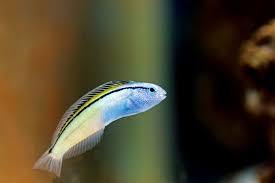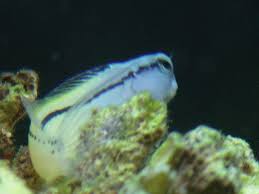
Throughout history, influential figures from various cultures and periods have been closely associated with flowers, either through their personal interests, cultural practices, or symbolic meanings. Let’s explore the profound impact of historical figures on the world of flowers:
**1. Empress Josephine (1763-1814):**
Empress Josephine, the first wife of Napoleon Bonaparte, was an avid collector and patron of botanical gardens. She established the renowned rose garden at Château de Malmaison near Paris, where she cultivated over 250 rose varieties. Josephine’s passion for roses contributed to the popularity of this flower in European gardens and floral culture.
**2. Leonardo da Vinci (1452-1519):**
The Renaissance polymath Leonardo da Vinci studied and sketched various plant species, including flowers, as part of his scientific observations and artistic pursuits. His detailed botanical drawings, such as the studies of lilies and other flowers, exemplify the intersection of art, science, and nature during the Renaissance era.
**3. Charles Darwin (1809-1882):**
Charles Darwin, renowned for his theory of evolution, also studied the co-evolutionary relationship between flowers and pollinators. His work on floral adaptations and plant reproduction mechanisms provided key insights into the diversity of plant species and the role of flowers in natural selection.
**4. Georgia O’Keeffe (1887-1986):**
American artist Georgia O’Keeffe is celebrated for her iconic paintings of oversized flowers, particularly her close-up renditions of irises, poppies, and lilies. O’Keeffe’s floral artworks capture the beauty and sensuality of flowers, reflecting her deep reverence for nature and its organic forms.
**5. Confucius (551-479 BCE):**
The Chinese philosopher Confucius frequently used floral symbolism in his teachings, associating specific flowers with moral virtues and ethical principles. For instance, he likened the plum blossom to resilience and integrity, emphasizing the transformative power of nature in nurturing human character.
**6. Claude Monet (1840-1926):**
Impressionist painter Claude Monet famously cultivated a stunning water garden at his residence in Giverny, France, which featured an array of water lilies and Japanese bridges. Monet’s vibrant depictions of water lilies in his paintings captured the ephemeral beauty of flowers and the play of light on water.
**7. Queen Victoria (1819-1901):**
Queen Victoria’s reign in the United Kingdom coincided with the Victorian era, characterized by elaborate floral symbolism and intricate floral arrangements. Her fondness for white flowers, particularly roses and lilies of the valley, influenced Victorian aesthetics and the language of flowers.
**8. Ibn Sina (Avicenna) (980-1037):**
The Persian polymath Ibn Sina, known as Avicenna in the Western world, wrote extensively on medicinal plants and their therapeutic properties. His botanical works, including the “Canon of Medicine,” cataloged the uses of various flowers and herbs in traditional Islamic medicine, shaping botanical knowledge in the medieval period.
**9. Frida Kahlo (1907-1954):**
Mexican artist Frida Kahlo incorporated flowers, especially indigenous Mexican varieties like marigolds and dahlias, into her self-portraits and artworks. Flowers held personal and cultural significance for Kahlo, symbolizing resilience, fertility, and Mexican identity in her iconic paintings.
**10. William Wordsworth (1770-1850):**
English poet William Wordsworth celebrated the beauty of nature, including flowers, in his romantic poetry. His lyrical odes to daffodils (“I Wandered Lonely as a Cloud”) and other flora reflected the Romantic era’s reverence for the natural world and the sublime qualities of flowers.
These historical figures left indelible marks on the cultural, artistic, and scientific appreciation of flowers, influencing perceptions and expressions of floral beauty across generations.
In the world of flowers, historical figures have played significant roles, influencing the cultivation, symbolism, and appreciation of floral beauty. Let’s delve deeper into the impact of these individuals on the realm of flowers:
**11. Marie Antoinette (1755-1793):**
Marie Antoinette, the Queen of France, had a profound interest in flowers and gardens. She cultivated the Hameau de la Reine, a rustic retreat at Versailles, adorned with gardens featuring roses, lavender, and other blossoms. Marie Antoinette’s passion for flowers reflected the opulent yet pastoral aesthetic of her era.
**12. Carl Linnaeus (1707-1778):**
Swedish botanist Carl Linnaeus revolutionized taxonomy by introducing the binomial nomenclature system for naming plant species. His classification of flowers and plants laid the foundation for systematic botany and contributed to a deeper understanding of floral diversity and relationships.
**13. Jane Austen (1775-1817):**
Renowned novelist Jane Austen often incorporated floral motifs and references in her writings, reflecting the societal significance of flowers in Regency-era England. Flowers symbolized courtship, sentiment, and social etiquette in Austen’s novels, enriching the narrative with botanical charm.
**14. Empress Dowager Cixi (1835-1908):**
Empress Dowager Cixi of China had a profound appreciation for peonies, which held cultural significance as symbols of prosperity and honor. She sponsored the cultivation of exquisite peony gardens in Beijing’s Summer Palace, showcasing the imperial patronage of floral arts during the Qing dynasty.
**15. George Washington Carver (1864-1943):**
African American scientist and educator George Washington Carver advocated for sustainable agriculture and promoted the use of peanuts and sweet potatoes as alternative crops. His research included studies on plant-derived dyes and medicinal properties, highlighting the practical applications of flowers and plants.
**16. Marie Curie (1867-1934):**
Nobel laureate Marie Curie, renowned for her pioneering research in radioactivity, also explored the use of plants, including flowers, in medical treatments. Curie’s investigations into the radioactive properties of certain plants laid the groundwork for future studies on botanical therapies.
**17. Hatshepsut (1507-1458 BCE):**
Ancient Egyptian pharaoh Hatshepsut cultivated gardens featuring lotus flowers, a sacred symbol of rebirth in Egyptian mythology. The lotus motif appeared prominently in Hatshepsut’s monuments and temple reliefs, reflecting her reverence for nature and divine symbolism.
**18. Robert Burns (1759-1796):**
Scottish poet Robert Burns immortalized the beauty of wildflowers and countryside blooms in his romantic verses. Burns’ lyrical poems, such as “To a Mountain Daisy” and “My Luve is Like a Red, Red Rose,” celebrated the transient yet profound essence of floral life.
**19. Marco Polo (1254-1324):**
Venetian explorer Marco Polo documented exotic flora encountered during his travels along the Silk Road and in Asia. His writings introduced European audiences to the diversity of Asian flowers, including peonies, chrysanthemums, and orchids, fostering cross-cultural botanical exchanges.
**20. Saint Theresa of Lisieux (1873-1897):**
Saint Theresa of Lisieux, a French Carmelite nun and mystic, expressed spiritual devotion through floral metaphors, particularly roses. Her metaphorical “Little Way” compared the spiritual journey to the growth and blossoming of a flower, emphasizing simplicity and humility in religious life.
These historical figures, through their pursuits and contributions, left enduring legacies that continue to shape our understanding and appreciation of flowers in cultural, scientific, and artistic contexts.
—
This section explores additional historical figures and their profound impact on the world of flowers, highlighting the diverse roles these individuals played in cultivating botanical knowledge, promoting floral symbolism, and fostering a deeper connection with nature.









